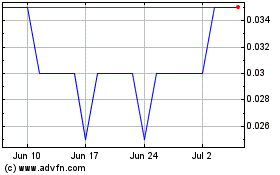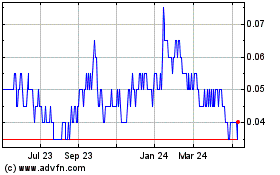TORONTO, ONTARIO is pleased to provide the following update on
its exploration programs in the Athabasca Basin. In addition to the
successful follow up of the Red Willow Osprey Zone announced in
April, the company is now able to announce the discovery of two
additional radioactive structures on the Red Willow Property found
within the Long Lake and Lyon Lake Zones.
"These are no longer mere geophysical targets" said Scott
Frostad, VP Exploration of Purepoint. "Our drill programs are now
advancing these areas into unique zones of merit, delineating
radioactive structures and alteration zones that are typical to
high grade uranium ore deposits."
In 2008, twenty-nine holes for a total of 5,718 metres were
completed at the Turnor Lake and Red Willow properties. The company
recently initiated its spring drill program at Red Willow's Radon
Lake Zone.
Highlights
- A 1.6 metre radioactive structure at Long Lake (hole LL08-05)
returned up to 2385 cps from the downhole gamma probe (15 times
background) while three narrow mineralized structures at Lyon Lake
(hole LL08-07) returned gamma readings that ranged between 1106 and
2433 cps.
- Two of three eastern electromagnetic conductors drill-tested
this winter on the Long Lake and Lyon Lake zones are now known to
reflect altered, graphitic rocks. These two target areas represent
8.7 kilometers of prospective EM conductors.
- Drill holes on the Quetzal zone at Turnor Lake encountered
broken, blocky, and desilicified Athabasca sandstone as well as
narrow radioactive shear zones (up to 1463 cps), while holes in the
Cotinga conductor encountered anomalous radioactivity at the
unconformity (up to 1247 cps). These two target areas represent a
further 8.0 kilometers of prospective EM conductors.
- Drilling at the Serin Lake Zone of the Turnor property
intersected an interpreted uplifted block of basement rocks, an
important feature associated with many of the larger uranium
deposits found in the Athabasca Basin.
All drill holes were probed with a Mount Sopris 2PGA-1000
Poly-Gamma Probe and downhole surveyed using a Reflex EZ-SHOT tool.
Drill core samples are being analyzed at the Saskatchewan Research
Laboratory in Saskatoon, with the most recent results still
pending.
Red Willow
Purepoint's 100% owned Red Willow project adjoins AREVA Resource
Canada Inc.'s claim group that contains the JEB, Sue, McClean and
Caribou deposits to the west, as well as UEX's Hidden Bay project
that surrounds the Rabbit Lake, Collins Bay and Eagle Point
deposits to the south. In April 2008, Purepoint reported on diamond
drill hole RW-19 from the Osprey zone that intersected a structure
averaging 0.58% U3O8 over 1.0 metre at a shallow depth of less than
100 metres and included an interval assaying 3.03% U3O8 over 0.1
metres. RW-19 is located approximately 80 metres north from the
Osprey zone discovery hole RW-07, which reported 0.20% eU3O8 over
5.8 metres in December 2007.
Long Lake Zone
Four holes, LL08-01 through 04, tested the 4.5 kilometer
electromagnetic (EM) conductor that partially runs beneath Long
Lake. Three of the four holes intersected graphitic rocks that
explained the conductor and all holes encountered strong
silicification and/or strong chlorite alteration associated with
fault zones. Significant radioactivity was not encountered. The
source of the historic Long Lake boulder train, located due north
of Long Lake, remains unknown. Less than a kilometer of the 4.5 km
Long Lake conductor was drill-tested, and it is now thought that
the source of the radioactive boulders remains further up-ice from
the recent drill program.
One hole, LL08-05, tested the 1.0 kilometer EM conductor that
partially runs beneath Riche Lake (located 500 m west of Long
Lake). LL08-05 encountered a 1.6 metre radioactive fault zone with
the downhole gamma probe returning greater than 1000 cps over the
entire structure and a maximum reading of 2385 cps. Prospecting by
Purepoint during the summer of 2006 discovered two radioactive
boulders approximately 200 metres due south of Riche lake that
returned uranium values up to 1.30% U3O8.
Lyon Lake Zone
Two holes, LL08-06 and 07, were drilled along the 4.2 kilometer
EM conductor named the Lyon Lake zone. Both holes encountered
graphitic rocks associated with strongly chloritic fault zones and
strong silicification. LL08-06 did not intersect anomalous
radioactivity but the second hole in the conductor, LL08-07,
intersected three distinct radioactive zones. The LL08-07 zones of
radioactivity were associated with small structures (less than 20
cm) at 31.1, 92.3 and 148.3 metres depth that returned 2433, 1106
and 1248 cps, respectively.
The Lyon Lake conductor was identified by Purepoint and had
never been tested by drilling. The recent drilling has shown the EM
conductor to be reflecting graphitic rock, making the entire length
of the 4.2 km conductor prospective. Boulder sampling by Purepoint
in 2007 returned values of 1.02% U3O8 and 1.14% U3O8 immediately
south (down-ice) of the Lyon Lake conductor.
Turnor Lake
The Turnor Lake Project is 100% owned by Purepoint. This 9,705
hectare property covers graphitic electromagnetic (EM) conductors
that are associated with uranium showings on adjoining properties,
namely Cameco's La Rocque occurrence (up to 33.9% U3O8 over 5.5 m)
to the west and Areva's HLH-50 intercept (5.2% U3O8 over 0.38 m)
located to the south. The project lies in close proximity to
several uranium deposits, including Midwest Lake, McClean Lake and
Eagle Point, and has a shallow depth to the unconformity at less
than 200 metres in most areas.
Quetzal Zone
Six holes (TL-35 to 40) tested the Quetzal zone and determined
the depth to basement in this area to vary between 110 and 145
metres. The Quetzal Zone is located north of Purepoint's previous
drilling. Approximately 7.0 kilometers of EM conductors were
defined during 2007.
Three of the six holes (TL-36, 39 and 40) encountered graphitic
basement rocks but did not intersect any major structure. TL-36
intersected a radioactive pyrite band (less than 20 cm) that
returned up to 2392 cps. TL-39 intersected 35 metres of broken,
blocky, desilicified and lost portions of core in the Athabasca
sandstone immediately above the unconformity. Unfortunately, the
hole was lost before the downhole gamma survey could be conducted.
TL-40 intersected five narrow (less than 10 cm) radioactive shear
zones hosting graphite and pyrite in a dark green strong chlorite
altered matrix. The TL-40 shear zones returned gamma results up to
1463 cps.
The other three holes in the Quetzal Zone (TL-35, 37 and 38)
targeted electromagnetic conductors proximal to granitic domes but
encountered granitic basement rocks and failed to explain the
conductor. No anomalous radioactivity was intersected in these
three holes.
Cotinga Lake
Three holes (TL-41 to 43) tested the 1.0 km EM conductor in the
Contiga Lake target area and showed the depth to basement ranges
from 130 to 150 metres. TL-41 encountered numerous zones of blocky
and rubbly core and desilicification in the Athabasca sandstone and
intersected anomalous radioactivity just below the unconformity, up
to 1237 cps, from a zone of missing core. TL-42 tested the same
conductor as TL-41 600 metres along strike and also encountered
anomalous radioactivity near the unconformity at 1247 cps. The
radioactivity encountered in these holes is not thought to explain
the radon anomaly in Cotinga Lake found by Asamera Oil Corporation
in 1977. TL-43 encountered granite and non-graphitic pelitic
basement rocks and did not explain the EM anomaly it was
testing.
Serin Conductor
One hole (SL08-01) tested the Serin conductor, which is
interpreted to be the northeastern extension of the conductor which
hosts Cameco's La Rocque showing.
SL08-01 intersected the unconformity at Serin Lake 210 meters
below surface, although results from the transient EM indicated the
unconformity depth was approximately 350 meters. The basement rocks
intersected were comprised of non-graphitic pelites and pegmatite,
leaving the conductor unexplained. Downhole gamma readings returned
weak radioactive anomalies (less than 800 cps) from the pegmatite
contacts.
Results from a 1984 seismic survey suggest that SL08-01 was
drilled into an unlifted block of basement rock, and that a major
offset in the basement rocks lies just in front of SL08-01. An
offset would be a significant discovery, as offsets in the
unconformity are associated with many of the unconformity
associated uranium deposits found in the Athabasca Basin.
About Purepoint
Purepoint Uranium Group Inc. is focused on the precision
exploration in the Canadian Athabasca Basin of more than 42 defined
target areas on its eleven 100% owned projects, and its two Basin
projects joint ventured with Cameco Corporation and AREVA Resources
Canada Inc. Established in the Basin well before the resurgence in
uranium, Purepoint is actively advancing this large portfolio of
multiple drill targets in the world's richest uranium region.
Scott Frostad BSc, MASc, PGeo, Purepoint's Vice President,
Exploration, is the Qualified Person responsible for technical
content of this release.
THE TSX VENTURE EXCHANGE HAS NOT REVIEWED AND DOES NOT ACCEPT
RESPONSIBILITY FOR THE ADEQUACY OR ACCURACY OF THIS RELEASE.
Contacts: Purepoint Uranium Group Inc. Chris Frostad President
and CEO (416) 603-8368 Website: www.purepoint.ca
Purepoint Uranium (TSXV:PTU)
Historical Stock Chart
From Jun 2024 to Jul 2024

Purepoint Uranium (TSXV:PTU)
Historical Stock Chart
From Jul 2023 to Jul 2024
